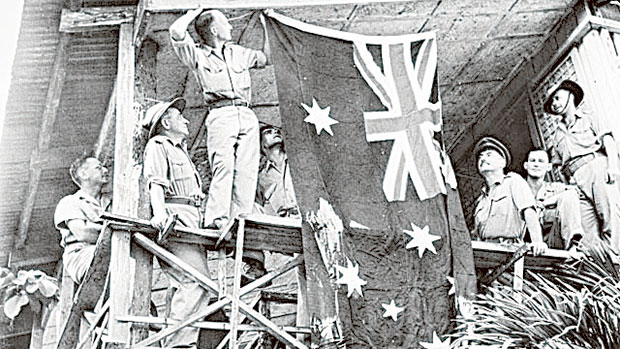
Manila: A memorial honouring the sacrifices of 92 Australians who perished during a pivotal encounter in the Pacific will be unveiled Monday in Palo, Leyte.
The marker, commemorating the sacrifices of Australian sailors during the 70th annual commemoration of the Battle of Leyte Gulf, will be uncovered in a ceremony at the Macarthur Park in Palo, Leyte, Australian diplomatic officials said.
The important role of the Australians in the conflict in the Pacific against the Japanese Imperial forces has been a distant episode in the collective memory of Filipinos.
The Philippines had been a former colony of the United States and it was the latter’s participation in the war which got prominence in the country’s textbooks.
Few Filipinos know about the sacrifices of Australians in retaking the Philippines from the Japanese occupational forces.
“Australians fought and died in the Philippines from the time of the US surrender in 1942 until the country’s final liberation in 1945,” Colonel Bruce Murray, Australia’s Defence Attaché to the Philippines, said.
“The Royal Australian Navy’s participation in what is arguably history’s largest naval battle at Leyte Gulf, and its role in providing crucial support to nine amphibious landings during the campaign made a valuable contribution to the overall success.”
The Battle of Leyte Gulf in Central Philippines was the biggest naval battle of Second World War and lasted from October 20 to December 31, 1944. A total of 800 ships from the US Navy, the Royal Australian Navy — which comprise Allied forces — and the Japanese Imperial Navy, took part in the conflict.
The Royal Australian Navy also took part in the other naval battles that comprise the American-led effort against the Japanese forces, the Battles of Surigao Strait in Mindanao and Lingayen Gulf in Luzon.
During the battles, Australian army bombardment liaison teams had helped to ensure the accuracy of naval fire in support of the landings. The Royal Australian Air Force on the other hand, contributed aerial photo-reconnaissance and aerial minelaying.
Before the big battles of the war, Australian coast watchers in the Pacific provided crucial intelligence that was necessary in retaking of Pacific Islands such as Solomons, Peleliu, among others.
“Australia’s involvement in the Philippine campaigns may not be as well-known as some of its other World War II campaigns,” said Murray. “But it is time to appropriately recognise the service of those who sacrificed their lives here, and the role they played in helping win the war in the Pacific theatre.
The Palo memorial will close to the site where General Douglas MacArthur first stepped ashore during the historic Leyte landings.
Australia’s Ambassador to the Philippines, Bill Tweddell, said his country’s contribution in the Allied effort “began when escaped prisoners of war joined Philippine guerrilla units, and continued with the assignment of airfield construction engineers to United States forces in the later stages of the war,” he said.
“Our close cooperation with the armed forces of the Philippines was forged in the heat of battle, and it continues in times of peace. I was immensely proud of the life-saving work of the Australian military in the aftermath of Typhoon Yolanda (Haiyan) last year. And I am honoured to be here today to recognise the efforts of our service personnel who sacrificed their lives for the freedom of the Philippines.”
According to the presidential palace, President Benigno Aquino III will attend the commemoration activities on Monday in Leyte.
On October 20, 1944, American forces led by General MacArthur landed on Red Beach in the municipality of Palo, near Tacloban, Leyte.
The Leyte landing was the start of the capitulation of Japanese occupational forces in the Pacific.












